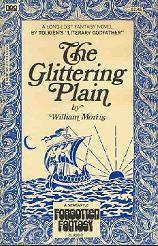 | |
| Author | William Morris |
|---|---|
| Illustrator | Walter Crane |
| Language | English |
| Genre | Fantasy novel |
| Publisher | Macmillan/Kelmscott Press |
Publication date | 1890/1891 |
| Publication place | United Kingdom |
| Media type | Print [1] (first published in the English Illustrated Magazine , issued as a book by the Kelmscott Press). |
The Story of the Glittering Plain (full title: The Story of the Glittering Plain which has been also called the Land of Living Men or the Acre of the Undying) is an 1891 fantasy novel by William Morris. He was perhaps the first modern fantasy writer to unite an imaginary world with the element of the supernatural. The book is also important for its exploration of the socialist themes that interested Morris.
Contents
- Plot introduction
- Publication history
- Kelmscott editions
- Other editions
- Copyright
- References
- External links
While Morris is better known today for his work in art and design rather than his writings, [2] he was the precursor of much of present-day fantasy literature. [3] His earlier fantasies The House of the Wolfings and The Roots of the Mountains were to some degree historical novels. Like these The Story of the Glittering Plain is set in a world similar to the distant past of northern Europe. Morris would go on to develop the new genre established in this work in such later fantasies as Child Christopher and Goldilind the Fair , The Wood Beyond the World , The Well at the World's End , and The Water of the Wondrous Isles . [4]
